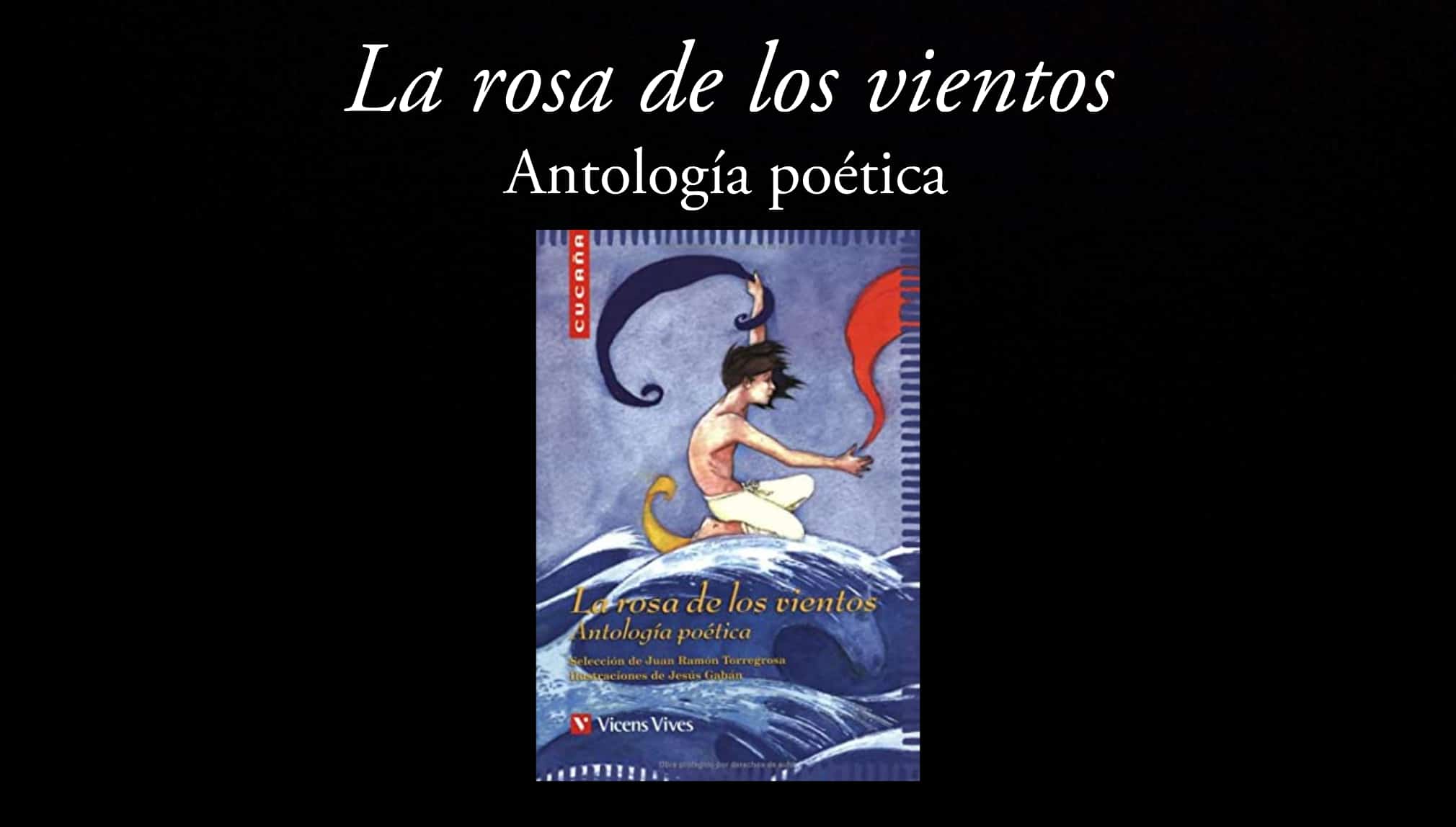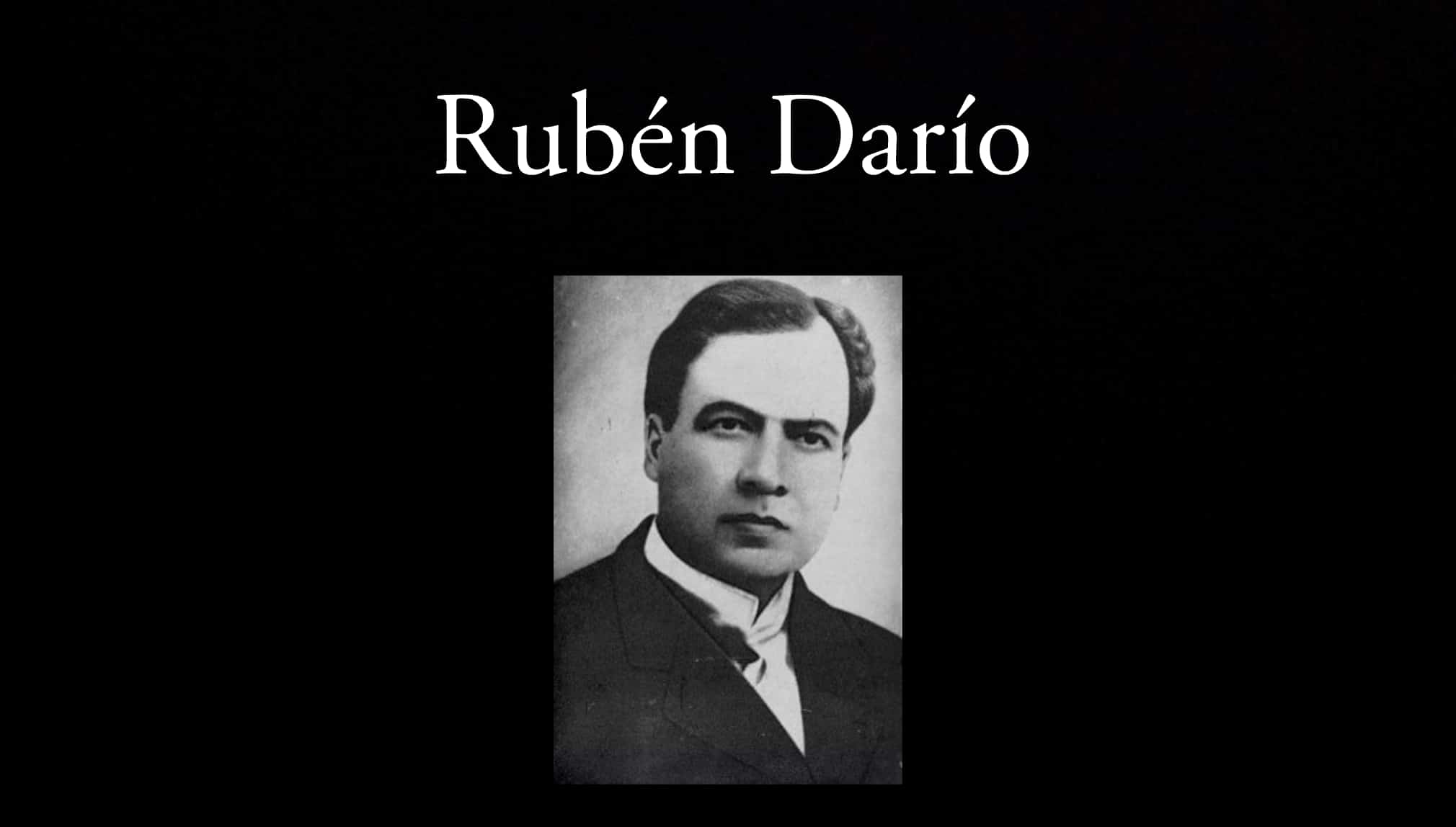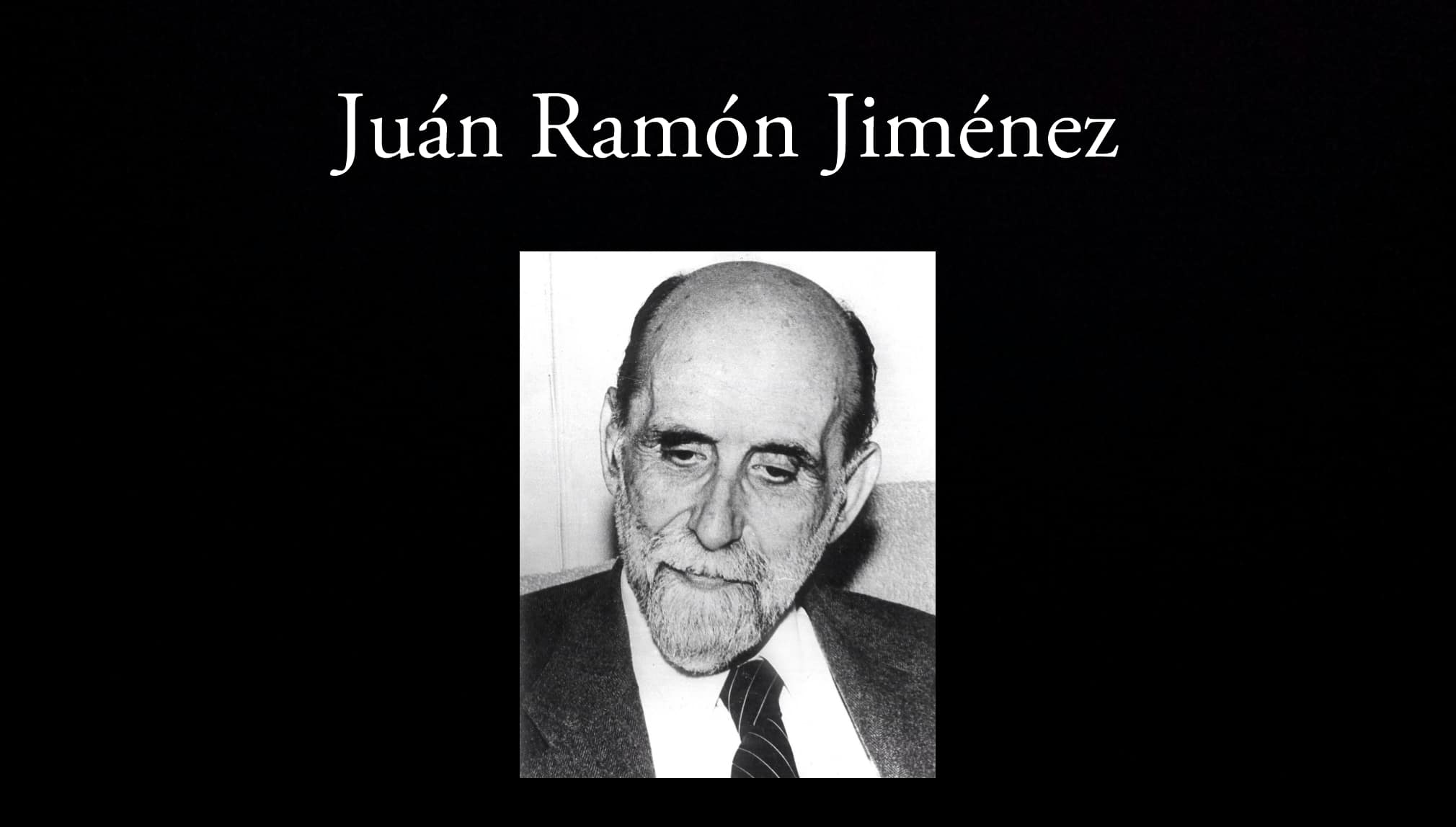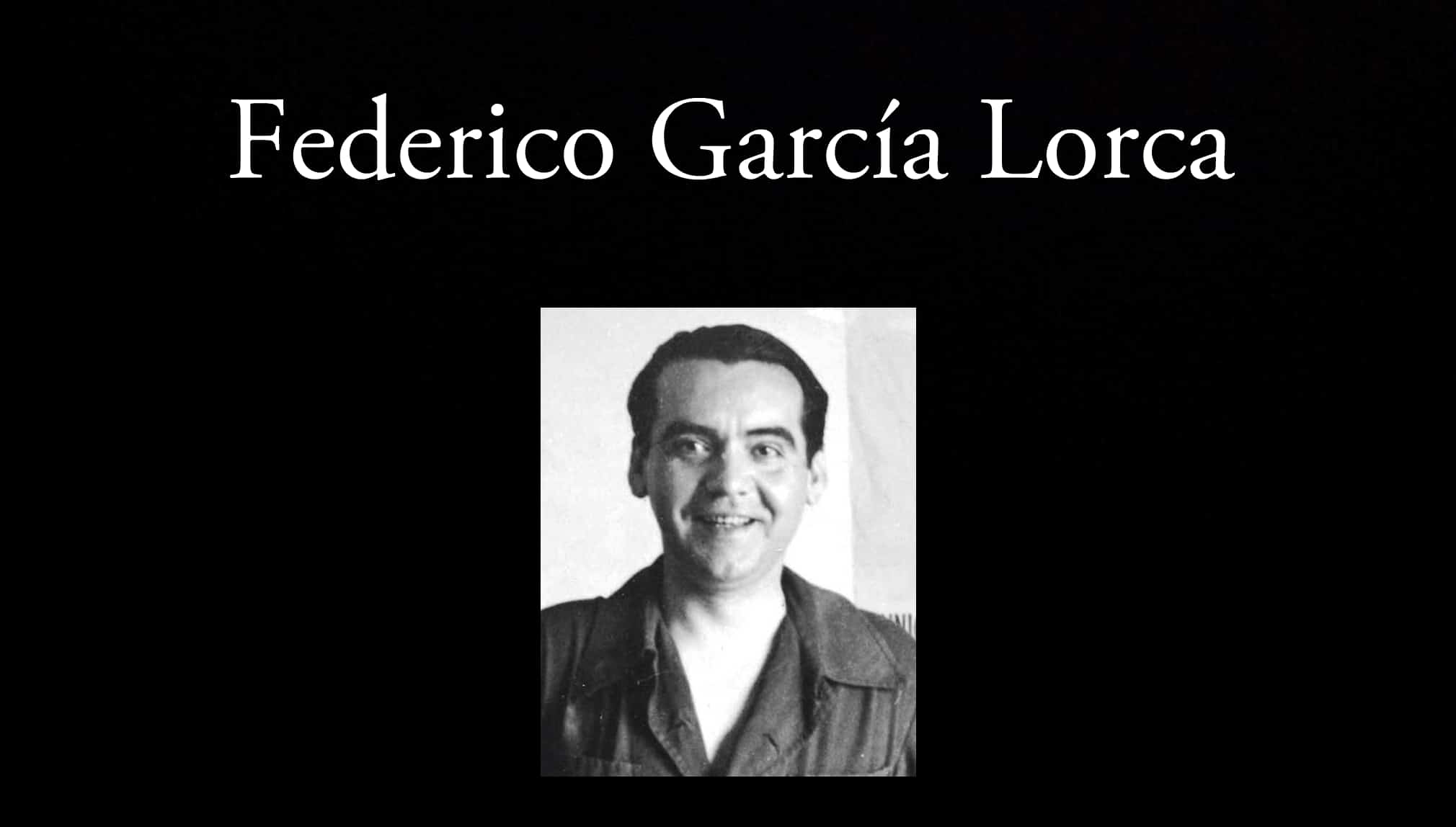
The rose of the winds. Poetic anthology.
The rose of the winds. Poetic anthology, is a compilation book of poems made by different writers throughout history. It was published as a didactic guide for the first time in 2002 by Editorial Vicens Vives, with Juan Ramón Torregrosa as editor. The illustrations correspond to Jesús Gabán.
According to the literary portal Moon Miguel (2019), "the book intends that you undertake an imaginary journey where you meet other cultures, strange lands and unimaginable landscapes”. Such an emotional and fantastic journey can only be evoked by the pen of the most brilliant poets in the world.
About the editor, Juan Ramón Torregrosa
Juan Ramón Torregrosa was born in 1955 in Guardamar del Segura (Alicante), Spain. He graduated with a degree in Hispanic Philology from the Autonomous University of Barcelona. Since 1979 he has worked as a secondary school teacher; He currently works at the IES Doctor Balmis in Alicante. Additionally, he worked as co-director of the Poetry Classroom at the University of Alicante between 1999 and 2005.
He has also directed critical editions of Benjamín Jarnés (Your line of fire), Becquer (Legends and rhymes) and Alejandro Casona (Our Natacha). His first known works date from 1975, most of them have been books of poems and anthologies. He has also produced a youth adaptation of the Dickens novel, History of two cities.
Some outstanding publications of Juan Ramón Torregrosa
- The triangular pond (1975). Poetry book.
- Siesta sun (1996). Poetry book.
- The four Seasons. Invitation to poetry (1999). Children's poetry anthology.
- Clear stream, serene fountain (2000). Children's poetry anthology.
- Today they are blue flowers. Oral tradition in poets of 27 (2007). Children's poetry anthology.
- Tomorrow will be honey (2007). Anthology of youth poetry.
- Loneliness (2008). Poetry book.
- Concert of opposites (2017). Poetry book.
Analysis of The rose of the winds. Poetic anthology
The latest editions of the anthology include explanatory or clarifying notes plus an appendix of assignments for the analysis of the poems. Of course, being an analogy, the type of writing, the terminology and the narrative style vary according to the author worked on. In addition, Jesús Gabán's illustrations constitute the perfect complement to perceive the essence of the letters studied.
The great merit of the Torregrosa anthology
Juan Ramón Torregrosa made a very meticulous selection of the writers and poems included in his anthology according to the topics covered. Is there a better way to encourage self-discovery in young people than with geniuses like Neruda or Gómez de la Serna? Even anonymous writings can be as or more attractive compared to those created by the most recognized poets.
Similarly, The rose of the winds manages to generate significant interest among casual readers. Despite being aimed at a child audience, reading this book is very enjoyable for audiences of all ages. Although it is a book with a clear pedagogical purpose, its structure can become fascinating for those readers who are passionate about poetry.
Modular
Juan Ramón Torregrosa presents the poems grouped into seven themes. Authors such as Rubén Darío, Rafael Alberti, Pablo Neruda, Bécquer, Juan Ramon Jimenez or Federico García Lorca, are described in more than one theme. In each poem, the editor points out activities in order to elucidate the writer's motives and feelings. In the same way, these assignments facilitate the understanding of the literary devices used.

Ruben Dario. Part of the poets in the anthology.
Taking off
Torregrosa groups the first ones, separates the first two poems around the relationships between father and son (a). The first poem analyzed is "Rueda que irás muy mucho", by Miguel Hernández. The motivational core of this writing is the devotion that a father feels for his son. The editor asks his readers about the ways used by the protagonist to call his son, the type of words used and the projected wishes.
The second poem is "Margarita Debayle", by Rubén Darío. This time, Torregrosa emphasizes the love for goodness and beauty awakened in the poet by the girl described in the story. The questions presented seek to facilitate the interpretation of rhetorical figures, dreams and hyperbole. In the same way, the religious and spiritual component is explained as a crucial element for the closing of the poem.
Traveling yearnings, dreams of freedom
In this group of poems, Torregrosa brings to the fore the different perspectives of the poets who have written about trips and escapes. Obviously, these are poems whose core in itself goes beyond the transfers from one place to another of a person. In reality, it addresses limitations, prisons, freedom, fear, courage, journeys beyond an unknown horizon ... Everything is in the mind of the writer and the reader.
«Maps», by Concha Méndez
Torregrosa asks readers about the sensation transmitted by the protagonist when she looks at the maps. Accordingly, the editor understands that the context is conducive to meddling in typical adolescent attitudes. Among them, the desire to evade or escape from situations (or from themselves). For this reason, a map can mean at the same time a challenge faced with courage or the fear of facing unknown places.
"Ride on the sea", by Rafael Alberti
Obviously, the lyrics of Rafael Alberti they reflect their love for the sea. Hence, the vast horizons and their indomitable strength awaken feelings of freedom, power, danger, or encouragement. All contradictions are valid in their domains. Beautiful, implacable, pacifying and stormy; the sea of Alberti is brought by Torregrosa as an exercise to let the imagination fly, literally.

Juan Ramón Jiménez. Part of the poets in the anthology.
«The telegraph sticks», by Celia Viñas and Duckby Blas de Otero
The expression of both poets is clear through a train and the telegraph line. Torregrosa uses both writings to explain how the pleasure of traveling can originate from different circumstances in each person. In this regard, the editor emphasizes the right to freedom of human beings and the ideal of eliminating borders. Concepts expressed in a more explicit style by Blas de Otero.
«Adolescencia», by Juan Ramón Jiménez and Pirate songby José de Espronceda
Probably, Jiménez's poem is the text of The rose of the winds with which young readers feel more identified. Why does the adolescent want to leave his town? How much does love weigh in the decisions made? This last question is also the central theme of José de Espronceda in his poem of an exquisite very musical romantic expression.
Other countries, other people
Traits and qualities
"Black Sensuality", by Jorge Artel, describes the extraordinary beauty of a woman with Afro-descendant genotypic inheritance. Torregrosa emphasizes the way in which Artel highlights the sublime features of his muse with an ivory smile and ebony skin. Similarly, the poem «Saga», by Aramís Quintero is analyzed by Torregrosa to highlight the precise use of adjectives when evoking sensory perceptions.
Adjectives for nature and concrete jungle
On this subject, the editor continues his study of the nouns used to describe nature in "Magred", by Francisco Brines. In contrast, Torregrosa goes on in the following poem -The Aurora, by Federico García Lorca— to delve into surrealist narratives of a dehumanized metropolis (New York). Those irrational images are detailed to explore the lyrics that reflect nightmares, violence, anxiety and death.
In the kingdom of love
Epithets and seasons
Juan Ramón Jiménez appears again in the poetic anthology with his Spring morning. On this occasion, Torregrosa asks the audience about the poet's reasons for choosing the flowers of an April morning as a way of expressing his joy. Similarly, in "Rimas" by Gustavo Adolfo Bécquer, the editor scrutinizes the metric bars of a lyrical story referring to the different stages of love: illusion, desire and failure.
Likewise, Torregrosa asks readers to write their own sensual scene similar to those captured by Ángela Figuera in her poem "Autumn". Similarly, with "Frutos del amor" by Antonio Carvajal, the assonance rhymes around passionate metaphors based on nature are analyzed.
Love in traditional poetry
En Soleares, Seguidillas and other couplets by Manuel Machado focus on traditional metric structures. In the editor's discretion, Machado's work represents the perfect opportunity to understand an assonance rhyme with odd or even verses. Whether in verses, Seguidillas or soleas.
In addition, Torregrosa presents activities to identify the metaphors in the poem «Rima», by Bécquer and the type of traditional metric in two anonymous poems. In the first, "Love is more powerful than death" (anonymous), the author has mixed feelings of resignation and hope. The second of them is "El romance de la condesita", with its 134 octosyllabic lines of acute assonance rhyme in its even verses.
The language of emotions
By referring to "The Queen", by Pablo Neruda, Torregrosa places the subjective experience of the lover in perspective. Then ask readers if they have looked with that veil that makes the appearance and gestures of the loved one sublime. At the same time, the editor explains by means of "Breakfast" (by Luis Alberto Cuenca) that ordinary language is perfectly valid in poetry. A complex and / or elaborate lexicon is not essential.
Let's walk hand in hand
Spirituality and universal values
In "The Wheel of Peace", by Juan Rejano, Torregrosa insists on the importance of phonic figures of speech. That is to say, the rhythmic elements achieved through a parallel and repetitive structure while reflecting on childhood, games, war and peace. In the same way, the editor addresses Neruda's "Ode to Sadness" to point out the relationship established by the poet between "dirty" animals and their affliction.
Despite the gloomy feeling, Neruda captured some hopeful passages in this work, since he understands sadness as a natural element of spirituality. Likewise, Blas de Otero explores the theme of faith in God and in humanity in his poem "In the vast majority." In the editor's ideology, Otero's writing favors the analysis of spiritual topics (religion, trust, values and inner strength).
Society, friendship and empathy
The poem «Bares», by Nicolás Guillén, is approached by Torregrosa to project a scrutiny of the colloquial language used by small-town people in taverns. Therefore, it raises questions about the typology of the characters and the frenetic pace of the city in contrast to the pleasant talks praised by Guillén. Then, the editor of the poetic anthology studies the generosity preached by José Martí in A white rose.
It is not a minor detail, since Martí professes in his writing a quality that defines the personality of individuals: courtesy with the adversary. Later, Torregrosa contrasts the poem Nobody is alone, by Agustín Goytisolo, where the author criticizes the indolence of the developed world. These individualistic attitudes are the object of Goytisolo's rejection in his appeal lines towards the rest of the world.

Federico García Lorca. Part of the poets in the anthology.
Nouns as resources of expression in different motives
The thirtieth poem analyzed by Juan Ramón Torregrosa in his analogy is "Distinto", by Juan Ramón Jiménez. It is a writing where ethnic, cultural and religious diversity is defended in the midst of a world infested with fanaticism and intolerance. Jiménez uses different nouns of nature (bird, mountain, road, rose, river and man) in analogy to the very plurality of human manifestations.
Next, the editor invites you to study the nouns placed by Rubén Darío in "The Wolf Motives." Many of them are synonyms used to highlight the differences between the natural behavior of animals and the willful wickedness of people. Later, Torregrosa continues the dissertation on nouns by means of the similes with nature used by Rafael Alberti in Song.
A walk through nature
As a link with the previous theme, Torregrosa extends his exposition on nouns in «Romance del Duero», by Gerardo Diego. In this poem the author puts the wisdom of nature (personified in the river) before the polluting anthropogenic elements. The sensible reality perceived through the senses is treated again in the questions raised about "I was playing my flute", by Jiménez.
In the same way, the editor returns to delve into spiritual arguments described by the verbs and nouns present in "El poplar and water in love." For this reason, Pedro Salinas' poem demonstrates the importance of spiritual life for poets. Then, Torregrosa asks the reader about the ways of writers to give personality to all the elements (natural or not) of their environment.
In the land of wit and humor
A matter of creativity
At the beginning of this theme, Torregrosa expresses: “There is no object or reality that cannot be the subject of a poem. It all depends on the ingenuity or the ability of the poet to transform something everyday or vulgar into poetic matter, as Pedro Salinas does in '35 spark plugs'". From that point on, the complexity of the composition is already clearly a matter of skill.
For this reason, the editor takes as a reference Lope de Vega with his "Sonnet suddenly" to explain the difficulty of composing in this style of "verse-poem". Additionally, Torregrosa praises the inventive capacity of Ramón Gómez de la Serna in Greguerías. Due to his extraordinary ability to establish prodigious relationships between - apparently - dissimilar entities.
The fables
Next, Torregrosa guides readers through activities designed to recognize the characteristics of the traditional fable. Accordingly, the poems are taken as reference The mole and other animals by Tomás de Iriarte and Love mockery of Baltazar de Alcázar. Because they represent excellent examples of contemporary literature and of the precision required if an epigram is to be written, respectively.
On the path of dreams and mystery
For the final theme of his poetic analogy, Juan Ramón Torregrosa relies on great masters of XNUMXth century Spanish poetry. This fantastic journey into the depths and longings of the human mind comes from the hand of:
- Antonio Machado, «He was a child who dreamed and Last night when he slept».
- Federico García Lorca, «Romance of the moon, moon».
- Juan Ramón Jiménez, "Nostalgia".